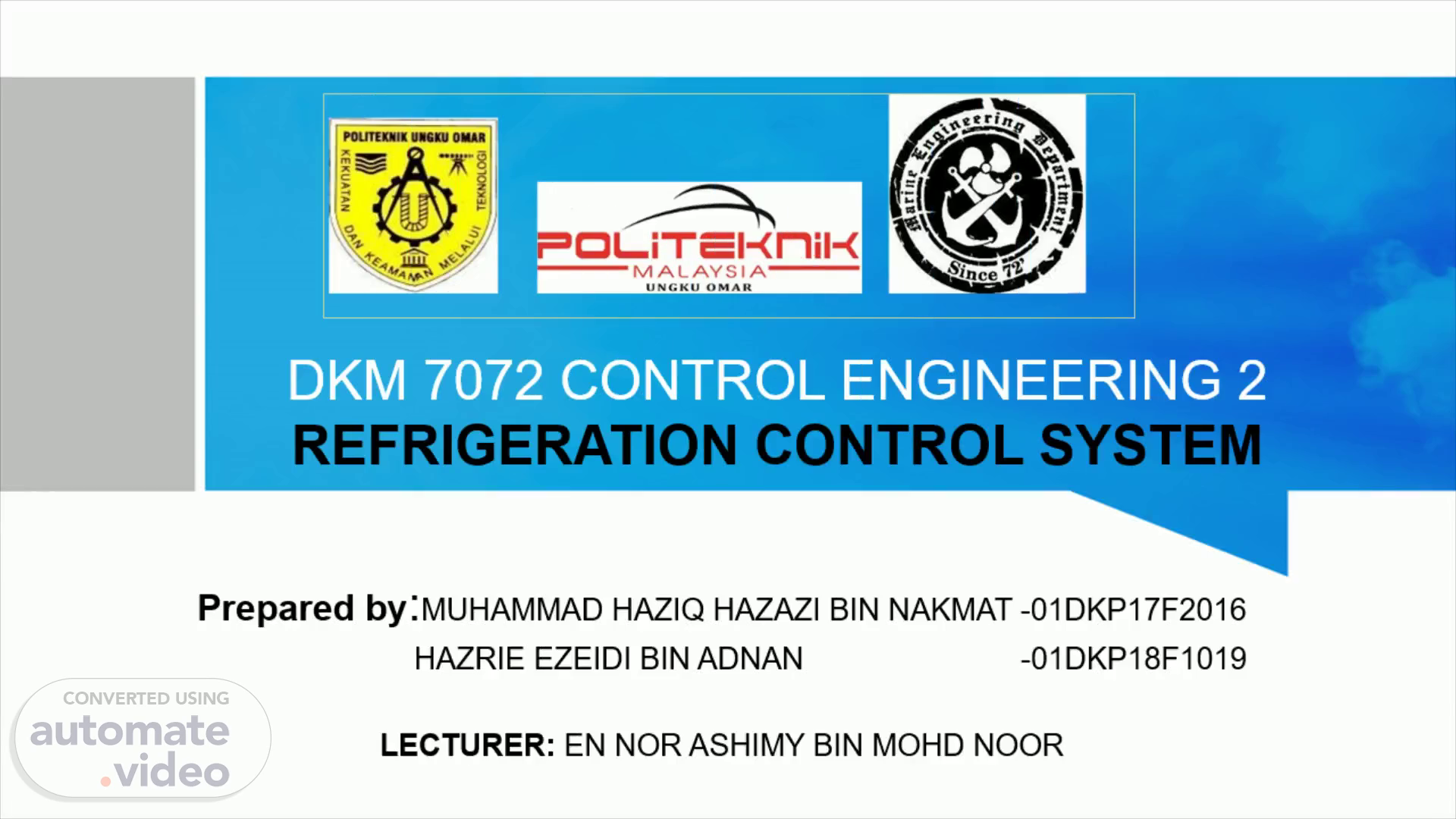
Page 1 (0s)
DKM 7072 CONTROL ENGINEERING 2 REFRIGERATION CONTROL SYSTEM.
Page 2 (38s)
REFRIGERATION WORKING PRINCIPLE. CYCLE. The refrigeration cycle starts and ends with the compressor. The refrigerant flows into the Compressor where it is compressed and pressurised. At this point, the refrigerant is a hot gas. The refrigerant is then pushed to the Condenser which turns the vapour into liquid and absorbs some of the heat. The refrigerant then proceeds to the Expansion Valve where it expands, losing pressure and heat. The refrigerant coming out of the expansion valve is cold and slow due to the loss of pressure. It enters the Evaporator in a liquid state where the exchange of heat takes place thus cooling the load inside the refrigerator. As the gas cools down the load, it absorbs the heat which turns it into a gas. The gas is then pushed back into the Compressor where it can start the cycle again..
Page 3 (2m 33s)
THERMAL EXPANSION VALVE. TEV. Expansion Valve The expansion valve helps reduce the pressure and temperature of the refrigerant. The sudden drop in pressure and temperature produces a cooling effect. The expansion valve also regulates the amount of refrigerant used in meeting the load requirements. The load, in this case, are the products that need cooling in the refrigerator. There are various types of expansion valves. They include: Capillary Tube Constant Pressure or Automatic Throttling Valve Thermostatic Expansion Valve Float Valve.
Page 4 (3m 47s)
THANK YOU.